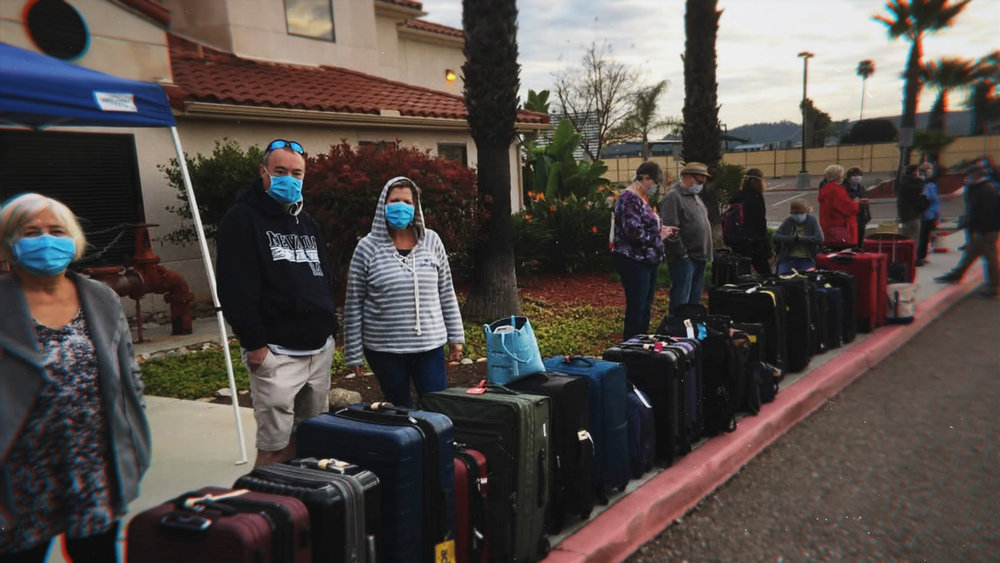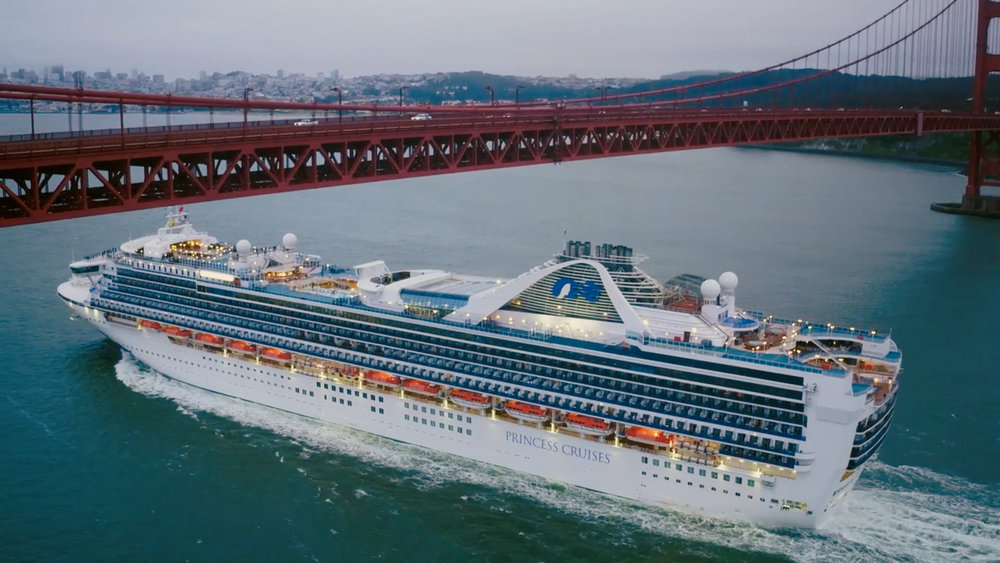It is Monday, September 12th, and I’m in an Uber on my way to the premiere of ‘Hell of a Cruise’. The driver tells me that, as of last week, they’re no longer required to wear masks to drive. This is my first time back in Manhattan since 2019. Things are different now. These days, fewer and fewer Americans wear masks in most restaurants and stores. Yet, just this past May, Covid in the US had reached its milestone millionth death, far surpassing the death totals of the AIDS epidemic, and officially, marking Covid as the deadliest event in US history.
I arrive an hour early so I grab refreshments at an outdoor Parisian cafe across the street. I order a Gimlet. Two, in fact, then write some possible bylines to begin this story. One stands out most:
Conquering Covid: A Triumph of American Capitalism. A Failure In Public Health Policy.
I don’t use this headline for obvious reasons. In truth, Covid-19 is a topic I’ve wanted to discuss over the few years. Everything from why governments reacted the way they did, to the medical handlings of it, to stories about the doctors, nurses, and public health workers I knew working through the thick of it. Thanks to a movie screening for Hell of a Cruise, courtesy of Peacock, I’ve finally begun writing this story. The first of which will be this piece with much more to come in the upcoming months.

Hell of a Cruise is a documentary featuring never-before-seen footage about the outbreak of Covid-19 on the Diamond Princess Cruise ship. Set in February 2020, Hell of a Cruise talks about the stranded Princess Ship and its outbreak while stuck in Okinawa Japan. According to the filmmakers, these testimonials are some of the earliest documented cases of Covid, which, along with their fumbling pandemic response, highlight some of the worst initial problems of the pandemic.
“Diamond was the first spreader event… before George Floyd and before the country fell apart,” said director Nick Quested during the screening. “I wanted to see if there were any lessons to have learned from the event.”
Indeed, the documentary quickly highlights the lack of communication, poor response, and overall, lack of control regarding the spread of this disease. Especially, when taking into consideration actions regarding a cruise ship corporation that valued profits over its passengers’ safety.
It begins with depictions of guests who are excited regarding the cheap price of these Diamond Princess Cruise tickets. A seemingly good deal just weeks before what we knew about Covid, its effects, and its 2-14 day incubation period.
The documentary also highlights some of the medical guidance that was oftentimes outright ignored in the earliest moments on the ship. Highlighting, the resumed cruising behavior, bar drinking, and casinos that remained open for profits despite the people coughing in the backdrop and early signs of a need for quarantine. Especially, after a mere two days since the ship’s first confirmed case.
It serves as a reminder of a time before government mask mandates or social distancing guidance was officially announced in the US on April 3rd, two months later. In one case in the film, we saw one family stuck in an isolated room with four bunk beds and a bathroom, unable to leave their tiny living quarters in what felt essentially like a cabin prison. It was also telling how overly optimistic the US was initially, as not only did everyone send a hackneyed ‘be safe Diamond Princess’ video, but anyone who wanted special food or drinks during this period, could have done so at no extra charge. An offer that was soon rescinded, mostly, because the ship’s snack and alcohol supplies were burnt out rather quickly.
Then, on February 1st, nearly two weeks into the cruise, the cruise ship docks in Okinawa permanently. This is where the movie begins to get more serious the more virus cases slowly creep higher on board. At the worst of it, highly equipped medical specialists, dressed head to toe with PPE, had arrived to assess the situation. Which ironically, also featured many bureaucrats that’d gone to visit wearing only a base face mask. Keeping risk of contamination across ship… rather high.
Testimonials against the handling of events included Dr. Arnold Hopland, who was stuck with his wife on the Diamond Princess. Hopland attempted to file complaints to Tennessee Rep. Phillip Roe, whom many wonder, if it were not for these complaints, along with a growing public concern about the disease, how much longer would it have taken to evacuate the passengers? The first passenger to have died on the ship happened on February 11th. Despite this, the same quarantine measures kept set in place as the disease kept slowly spreading. It was, as self-described by the guests, an experiment of human ‘Petri dishes’ as healthy passengers quite often mixed in close with the sick. There was no real gauge for the safety of their air filtration system.
Corporations such as Carnival filed registries under Bermuda to avoid our own laws for taxes and regulations regarding occupational health. A refreshing point of the documentary was in highlighting how many of these companies used foreign workers, who, under poor maritime labor laws, were allowed to be overworked while being paid close to nothing in wages. These were the neglected service people who were both living in unsafe conditions and in close contact with all guests on a regular basis.
An anonymous employee reported that many of the cruise ship’s employees couldn’t even talk to the media or else risk losing their job. At its worse, suicides became common on cruise ships.
In total, the Diamond Princess harbored over 3500 people, with over 700 confirmed cases, and a dozen reported deaths. Yet, by Feb 20th, the Trump administration treated it more as a PR crisis than a potential pandemic. In many ways, foreshadowing all the things that would go wrong.
The end of the Hell of A Cruise screening featured a Q + A with some of the filmmakers. One of which, in attendance, was Doctor Robert Kadlec, one of the Physicians who’d personally vouched for the release of stranded cruise ship citizens to return back home. Kadlec stressed the worst time for a pandemic was during an election year. When asked honestly about it…
Audience Member: “Honestly, are we ready for the next pandemic?”
Dr. Kadlec: “No. There still is no real immediate infectious disease team on a federal level.”
In 2018, Doctor Kadlec was one of the first to testify in congress about our ill-preparedness for the next pandemic. Kadlec was also assistant secretary for preparedness and response at the Department of Health and Human Services. In many ways, the one responsible for our earliest stockpile of PPE supplies.
He reveals in the Q+A, an original idea to deliver every American household a package of five reusable masks, things that could at least protect adults still going to work. That was shut down by folks like Jared Kushner for reasons to these measures feeling unfashionable and apparel-looking ugly. An entire preparedness plan was scrapped by the whims of a privileged fashion statement.
The Takeaway
Hell of a Cruise weaves its narrative with fantastic footage, offering important lessons, as it delves into the early days of the pandemic. The film is a stellar must-see documentary on Peacock that I’d recommend to everybody.
4.5/5 Stars

